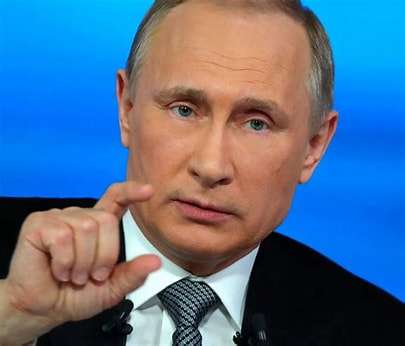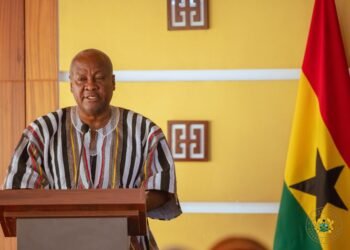President Vladimir Putin has updated Russia’s nuclear doctrine, two days after his US counterpart Joe Biden granted Ukraine permission to strike targets deep inside Russia with American-made weapons.
Under the updated doctrine, Moscow will consider aggression from any non-nuclear state – but with the participation of a nuclear country – a joint attack on Russia.
The change comes as Russia’s Defense Ministry said Ukraine fired six U.S.-made ATACMS missiles early Tuesday, November 19, 2024, at a military facility in Russia’s Bryansk region that borders Ukraine, adding that air defenses shot down five of them and damaged one more. Ukraine’s military claimed the strike hit a Russian ammunition depot.
The attack, if confirmed, would mark the first such use by Ukraine since Biden gave the green light.
The Russian government had previously signaled that the US approval would be a dangerous escalation of the war in Ukraine, now 1,000 days old.
The Kremlin began this fresh round of nuclear saber-rattling, saying the revised military doctrine would in theory lower the bar to first use of nuclear weapons.
In a phone call with reporters, Kremlin spokesperson, Dmitry Peskov noted the changes mean that “the Russian Federation reserves the right to use nuclear weapons in the event of aggression using conventional weapons against it and/or the Republic of Belarus.”
Nuclear deterrence is a pillar of Russian military doctrine, but the revision appears to broaden the definition of what would be considered aggression against Russia.
“An important element of this document is that nuclear deterrence is aimed at ensuring that a potential adversary understands the inevitability of retaliation in the event of aggression against the Russian Federation or its allies.”
Dmitry Peskov
The revised doctrine is clearly meant to send a strong signal to Ukraine’s Western backers about the risks of escalation – and make policymakers and the public think twice about the possible consequences of providing more sophisticated and far-reaching weaponry to Ukraine.
Since Russia launched its full-scale invasion, it has lowered the threshold under which it would consider using nuclear weapons.
In a 2020 update to the nuclear doctrine –before the war began – Putin said Moscow reserves the right to use nuclear weapons “when the very existence of the state is threatened.”
However, changes outlined in September this year appeared to lower that threshold, saying that Moscow could use nuclear weapons when facing “a critical threat to its sovereignty.”
Tuesday’s decree refines the circumstances in which Russia might resort to nuclear weapons. It essentially restates and makes official the terms set out in September’s proposed revision, which said Moscow would consider any assault on it supported by a nuclear power to be a joint attack.
This updates the list of conventional weaponry whose launch might constitute a critical threat and specifies an attack on Belarus would be viewed on an equal footing to Russia.
Peskov Asserts Document’s Timeliness
Commenting on whether the updated doctrine was deliberately issued to follow Biden’s decision, Peskov said that the document was published “in a timely manner.”
He added that Putin instructed the government to update it earlier this year so that it is “in line with the current situation.”
Asked if a Ukrainian attack with longer-range U.S. missiles could potentially trigger a nuclear response, Kremlin spokesman Dmitry Peskov answered affirmatively, pointing to the doctrine’s provision that holds the door open for it after a conventional strike that raises critical threats for the sovereignty and territorial integrity: of Russia and its ally, Belarus.
Separately, Russian Foreign Minister, Sergey Lavrov emphasized that the Ukrainian strike in Bryansk would have been impossible without the involvement of U.S. military experts.
The attack marked a “qualitatively new phase of Western war against Russia,” he said on the sidelines of the G20 meeting in Brazil, warning that Moscow will “respond accordingly” without elaborating.
READ ALSO: Somaliland Elects New President Amid Rising Tensions




















